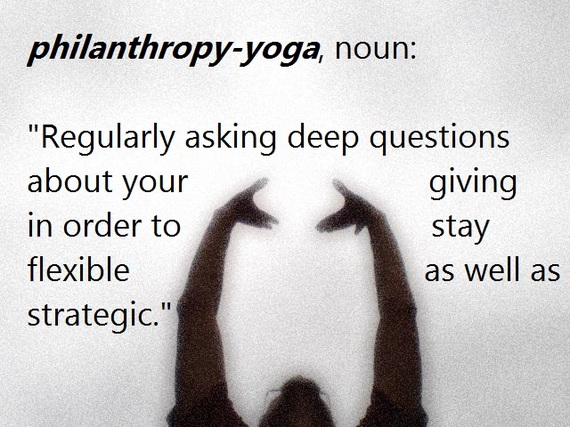How do you think change will happen?
Effective people usually ask good questions - not just of others, but of themselves.
The question at the beginning of this post is worth asking of ourselves at any time, in any situation. But for people who give, it is critical.
I'm the writer of a 19 guide series called Your Philanthropy Roadmap. It was developed by the nonprofit Rockefeller Philanthropy Advisors (RPA) and funded by the Bill & Melinda Gates Foundation.
Here are the five key questions that form the backbone of that Roadmap:
WHY ARE YOU GIVING?
WHAT DO YOU WANT TO ACHIEVE?
HOW DO YOU THINK CHANGE WILL HAPPEN?
HOW WILL YOU ASSESS PROGRESS?
WHO WILL JOIN YOU?
The third question is pivotal because it really helps us define and refine our approach to giving.
Here's what the guide has to say.
"Philanthropy allows the exploration of human potential. Of course, that includes the potential of the donor - not just in the capacity to give, but in the ability to think through how the philanthropy might achieve its stated goals.
The method by which you believe change will happen is variously called a strategy, a theory of change, a logic model, or an approach. The term you choose to use is of no particular importance. What is critical is to answer the "how" question: How will philanthropy help achieve the goal you have identified?"
This is a big subject. And RPA deals with it in detail in another guide called Making Change Happen.
But right now, let's take an example. For instance, your goal may be to improve and protect a critical watershed area. You could choose among these approaches for your philanthropy:
RESEARCH studies to understand and define the impacts created by what is or might be discharged or built near the watershed area.
AWARENESS campaigns to raise public knowledge of current or potential harm to the watershed area
POLICY efforts to shape the legal and regulatory framework protecting the watershed
INNOVATION projects that seek new technologies for activities that currently pose a threat to the watershed
REMEDIATION programs that work to repair the harm that's occurred
OTHER APPROACHES of which there are many, including transactions that place critical parts of the land into conservation.
In many cases, though, the path will not be so clear. You may be faced with competing theories -- all compelling, perhaps none of them proven. You'll have to make an informed choice -- supported by the facts available, the thinking behind various theories of what might work, and your own convictions and comfort level about what sort of investment you're willing to make.
Once you have settled on the approach to take to reach your goal, you can put some thought into tactics. What's your time horizon? How concentrated do you want to be -- do you want to support one organization, five or 50? Do you want to fund operating programs, or make capital grants?
Many philanthropists think beyond the traditional grant, and consider whether an investment is the right tool to achieve the change they seek. That investment might be an equity fund for social entrepreneurs or a loan to a nonprofit to launch an earned-income enterprise. The field of impact investing, is blurring the boundaries between philanthropy and capital markets. That's a good thing. But like any strategy, such philanthropic investment is not a panacea for every situation.
For these funders, indeed for everyone who gives, the process of considering how change can happen eventually leads to another fundamental giving question:
What is the optimal way to use your money?
The answer to that will likely change over time, encouraging effective donors to keep posing - and answering -- questions. But you shouldn't worry. Inquiry spurs efficiency. And efficiency naturally encourages further inquiry.
It's like a kind of philanthropy-yoga: regularly asking deep questions about giving helps donors stay flexible as well as strategic.
FOR MORE: See the Your Philanthropy Roadmap guide -
Cross-posted on Thinking Philanthropy

